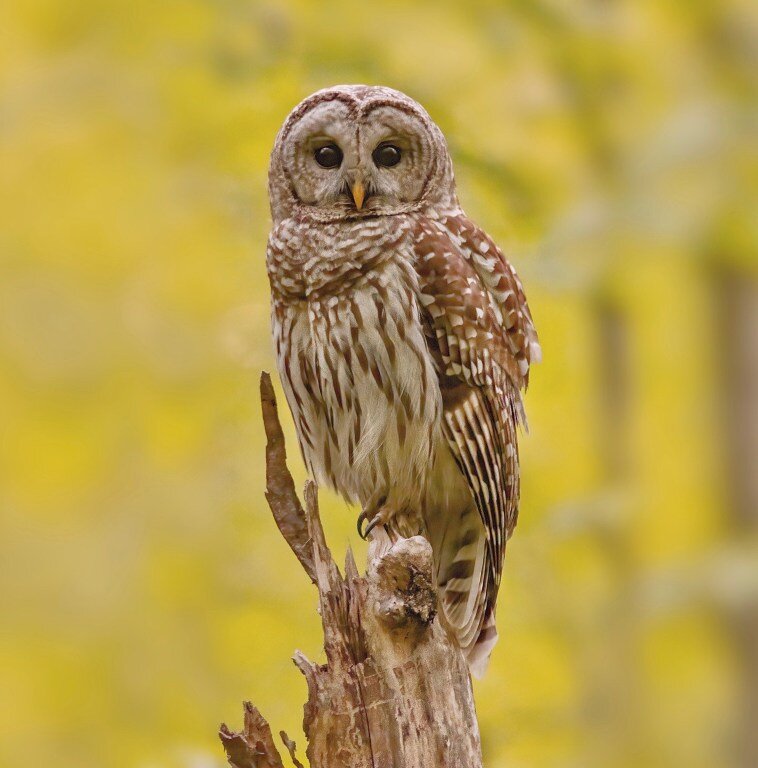PUBLISHED ON July 26, 2020 by Tomas Koeck in Easton Courier
While most Easton residents are getting ready for bed on sultry summer evenings, the barred owl (Strix varia) is just beginning to open its eyes and prepare for a long night of hunting prey and feeding its young. The barred owl is a common species of wood owl that inhabits much of the forests of New England.
This owl species prefers wetlands and will readily hunt aquatic prey. They have also been known to hunt frogs, crawfish, fish, and even snakes. During this time of year, barred owls who have successfully raised young (or owlets, as they are called) begin a new stage of life, nomadically feeding their teenage brood for much of the summer. The young owls will only become fully independent in August when they fly off and separate from their family to find their own territories as the warm summer months give way to the cool nights of Autumn.
Barred owls are one of the more common species of owl in New England. — Tomas Koeck Photo
Barred owls are considered “true owls” and have several relatives, some of which they prey on, and some of which they consider predators. The screech owl (Megascops asio) is a smaller species of owl that often dwells in the same habitat as the barred owl. Unfortunately for screech owls they can often become prey of barred owls when regular prey becomes scarce.
The larger great horned owl (Bubo virginianus), also known as the “tiger of the woods,” is an avian apex predator of the New England forest. Great horned owls are among the more unpredictable species because they often “engage in unexpected behavior,” said Larry Fischer, a federally licensed bird bander and experienced owl researcher.
The great horned owl is one of Connecticut’s largest owl species. Photographed in Fairfield, CT. — Tomas Koeck Photo
Some great horned owls have been recorded preying on animals that are much heavier than the owl itself, including raccoons, red-tailed hawks, great blue heron, and even skunks. The barred owl can even fall victim as these species often intersect in territory. Fortunately for barred owls, great horned owls prefer a dryer habitat compared to the swamps that barreds have become accustomed to inhabit.
On your next evening walk, keep an eye out–or, more appropriately, an ear out–for these mysterious birds. Barred owls are vocal throughout the year while the more secretive great horned owl will remain silent for most of the year, making them much more difficult to find.
Owls can readily be identified by their call. Barred owls make a hoot that often sounds like “Who cooks for you? Who cooks for you all?” and will often be heard during the late evening, usually around 7 p.m. in the summer months. Owls can be hard to find, but with a little practice and patience, you could find yourself in an owl encounter on your next venture during your Sunday nature walk.
To find barred owls, explore some of Easton’s hiking wooded areas through the Aspetuck Land Trust or explore trails throughout Connecticut at CT Woodlands.
For more nature photos, fun facts, and environmental entries, you might like to follow my nature photography instagram, @wild_new_england_.






